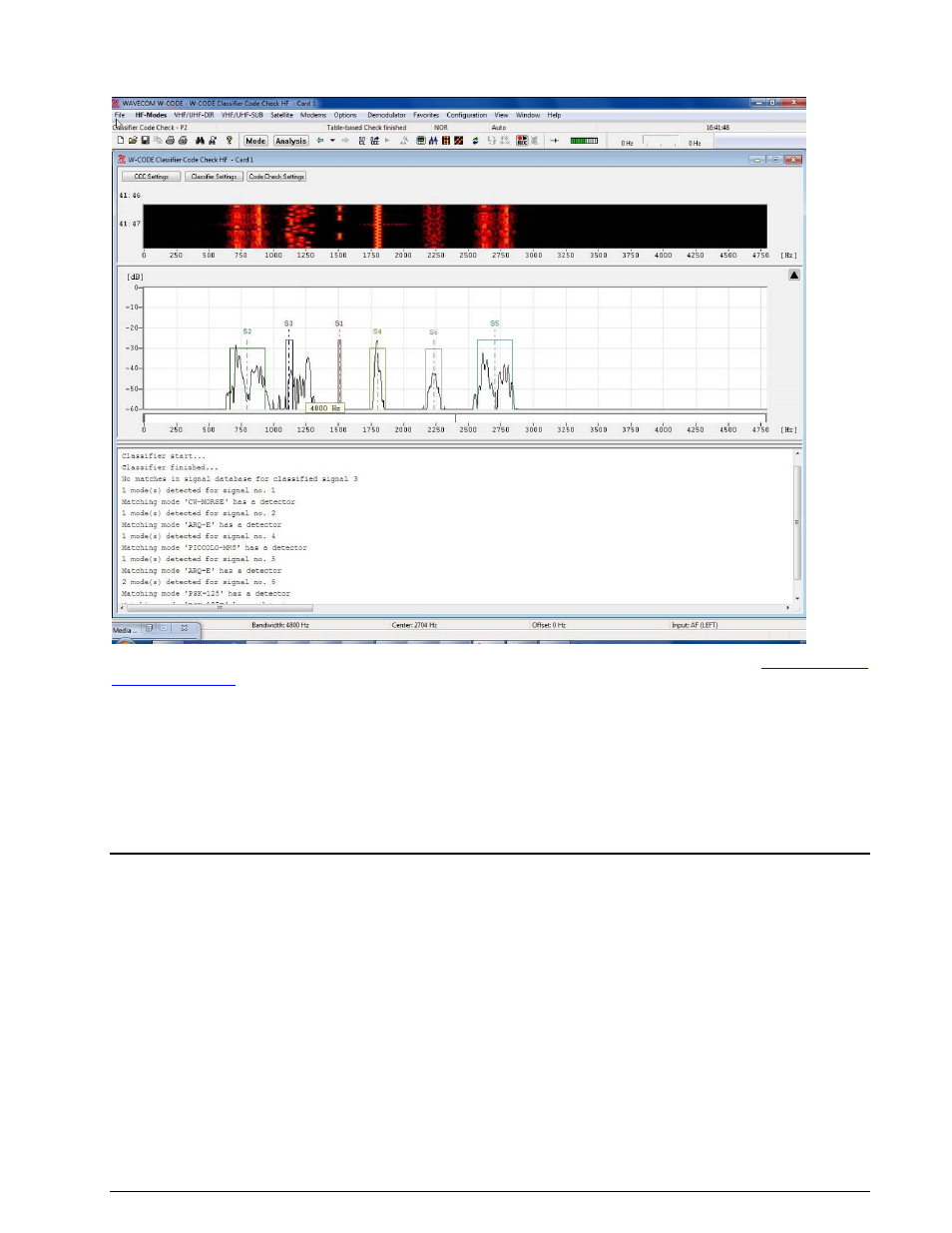Decoding, Classifier code check (ccc) vhf/uhf, How the classifier code check works – Wavecom W61PC V7.5.0 User Manual
Page 265

WAVECOM Decoder W61PC/LAN Manual V7.5
Classifier (Optional)
255
Status Window
The status window displays status messages for each step of the process selected in “
” on page 252. The status messages should be self-explanatory.
Decoding
Process 4 and 5 complete the classification and code checking steps by automatically switching to decod-
ing of the assumed mode.
In the case that a sampling spectrum contains multiple signals, and without any preference set in Code
Check Settings, Signal #1 is automatically selected for decoding; otherwise the preference checked will
determine the selection for decoding.
Classifier Code Check (CCC) VHF/UHF
The VHF/UHF Classifier Code Check is a versatile analysis tool for the classification of unknown, possibly
double-modulated signals and the determination of the protocol (mode) in use. The CCC combines a wide-
band classifier with a table-based mode check and an advanced code check. The CCC will attempt to pro-
cess all signals within a bandwidth of up to 96 kHz depending on settings. As is obvious from its name, the
VHF/UHF Classifier Code Check primarily addresses the requirements for the analysis of signals from 30
MHz to 3 GHz, but it will of course work with signals in other frequency ranges if they fall within the band-
width, and fulfil the other criteria, used by the CCC processes.
How the Classifier Code Check works
The CCC processes input signals in up to four successive steps as shown in the block diagram below,
which also shows the possible signal paths. The user can select how many steps should be involved in the
analysis of the signal(s) under investigation.